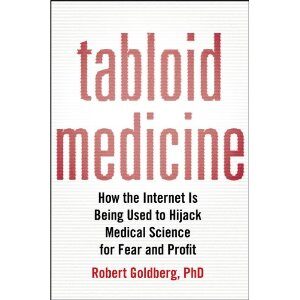The new 1 in 36 autism rate means the CDC is getting better at finding and diagnosing existing autistic children, not that there is actually a higher rate of autism.
Tag: CDC
Shannon Des Roches Rosa Today the CDC released new autism prevalence numbers of 1 in 59, or 1.7%. As we wrote in 2014 after the CDC adjusted its autism prevalence rate to 1 in 68, it’s important to keep calm and think critically about what these readjusted numbers actually mean: We are getting better at finding and diagnosing autistic kids. This is good news. As the CDC press release states, “Autism prevalence among black and Hispanic children is approaching that of white children.” This means that more autistic kids who need support will have the opportunity to get it. Many researchers and experts have long considered the CDC’s estimated autism prevalence rates to be too low, and consider the 1 in 38 estimate from a 2011 study of autism prevalence in South Korea to be more realistic. This is not evidence of some sort of “autism epidemic.” Much of the…
Shannon Des Roches Rosa www.thinkingautismguide.com We’ve said it before, we’ll say it again: There Is No Autism Epidemic. Not even after US estimates for autism prevalence recently rose to 1 in 45. How do we know there’s no autism epidemic? Two reasons: A comprehensive survey of autism prevalence in Korea estimated a rate of 1 in 39, as reported in 2011. There’s no reason US rates should be much different, so the new numbers are likely portraying reality more accurately, rather than indicating reality is changing. Researchers have been saying for years that autism’s prevalence has mostly risen in response to changes in diagnostic criteria, rather than due to environmental triggers or other causation ideas. The role of changing diagnostic criteria in rising autism rates is particularly relevant right now, given that theme’s prominence in Steve Silberman’s award-winning, current bestseller NeuroTribes. Silberman devotes a sizable section of the book to…
Shannon Des Roches Rosa www.thinkingautismguide.com Yesterday the U.S. Centers for Disease Control and Prevention (CDC) held a media briefing to announce and discuss readjusted estimates for autism prevalence: 1 in 68 children. But what does that estimate actually mean? Well, that takes some critical analysis, digging, and sifting, which we’ll walk you through, starting with the CDC’s Dr. Colleen Boyle’s opening statement: “CDC estimates that one in 68 children has been identified with autism. This estimate is based on information collected from health and special education records of children who are eight years old and living in 11 communities in Alabama, Arizona, Arkansas, Colorado, Georgia, Maryland, Missouri, New Jersey, north Carolina, Utah, and Wisconsin in 2010. These data are from CDC-sponsored autism and developmental disabilities monitoring network. The new estimate exceeds previous overall estimates, roughly it’s 30 percent higher than our last estimate of one in 88 children. To better…
Though wandering or “elopement” is not a safety concern exclusive to the autism community, it is a hot topic due to the Centers for Disease Control and Prevention (CDC) proposal to make wandering a medical diagnostic code. While those behind the proposal argue that codifying and diagnosing wandering will lead to increased data and a better understanding of prevalence, critics worry that a medical diagnosis for wandering could lead to involuntary restraint and abuse of vulnerable autistics. At the Thinking Person’s Guide to Autism, part of our mission is to support good science, and that starts with good data. With this in mind, we interviewed two advocates of the Interactive Autism Network (IAN)’s survey on wandering and elopement (escaping) among individuals with autism spectrum disorders (ASD): Lori, whose son Connor has autism and for whom wandering is a serious safety issue; and Dr. Paul Law, Director of the Interactive Autism…
I got a chance to talk with Dr. Robert Goldberg PhD about his new book “Tabloid Medicine.” In it he breaks apart the formula for Tabloid Medicine: change the terminology to fit your agenda, create an instant expert, play the little guy against the big guy, proliferate bad information, then find a celebrity to lead the charge. Voila! Your very own epidemic-I make light, but this book doesn’t, since it’s not really a funny topic. We spoke of how he came to the topic as a parent, when his own daughter struggled with misinformation in the media, but continued, fueled by the tragedy that with so much good the internet could be doing, it was being “hijacked” by the likes of Andrew Wakefield, Jenny McCarthy, David Healy, Sidney Wolfe MD, and Barbara Loe Fisher. Passionate about the subject, and well-grounded by facts, Dr. Goldberg answered a few questions for me.…



